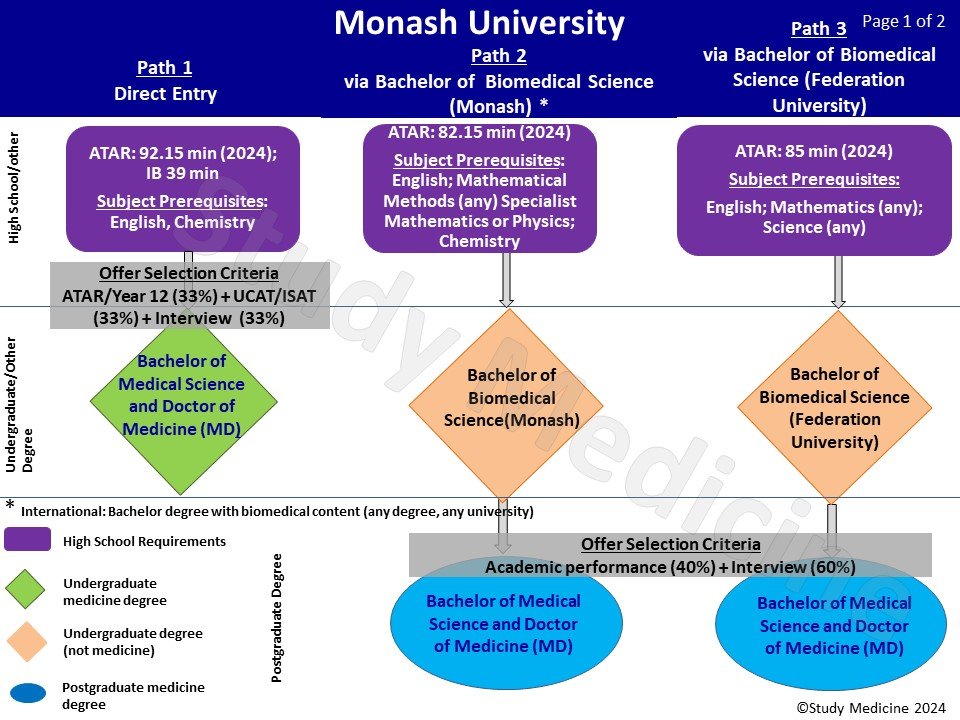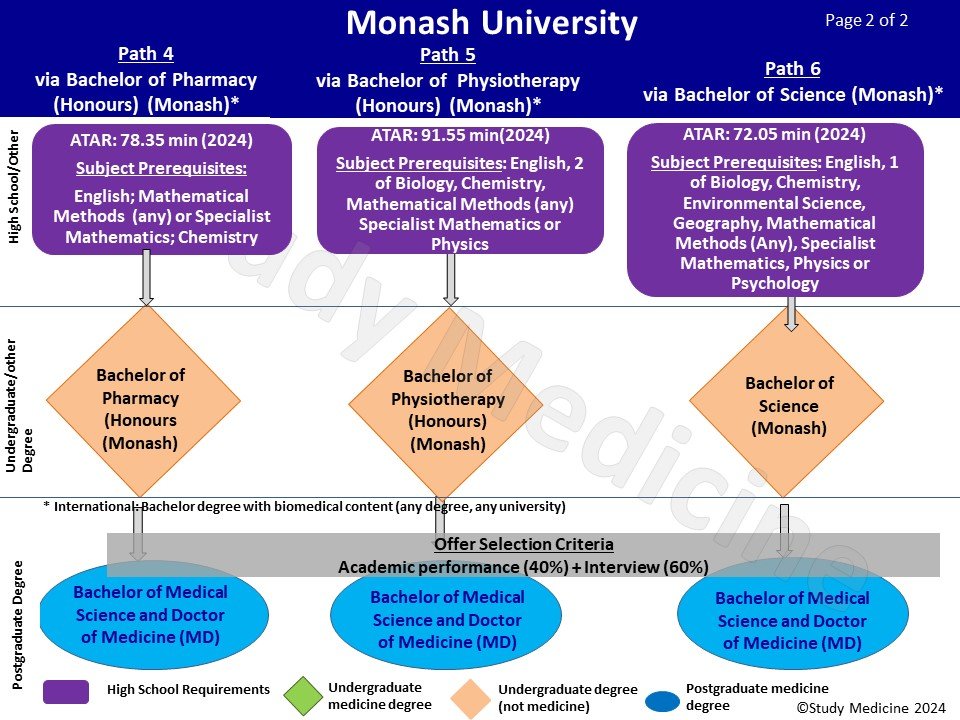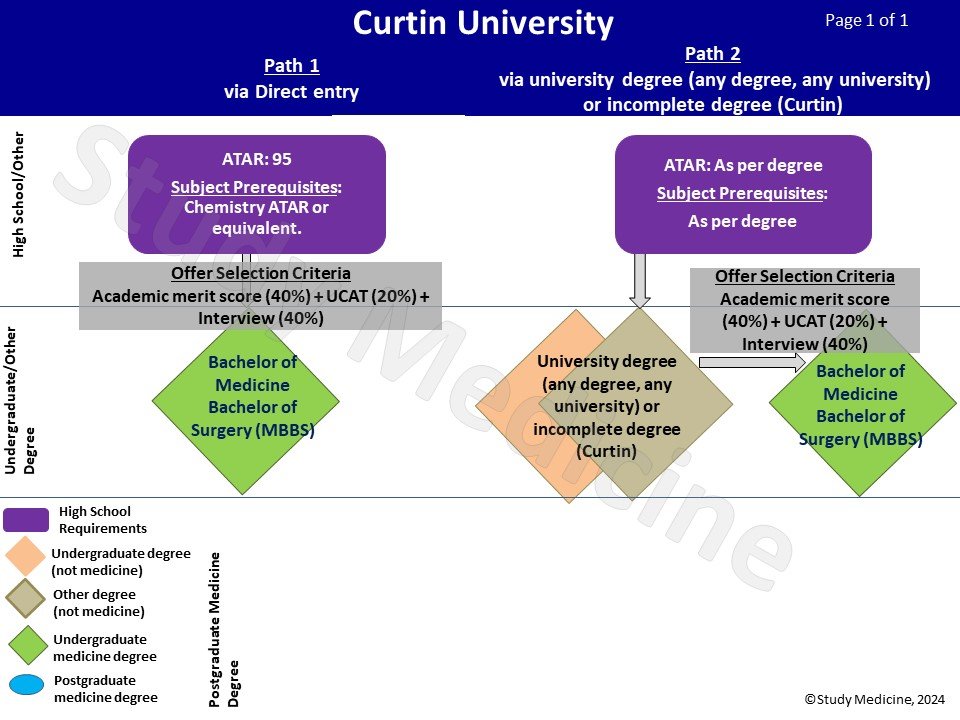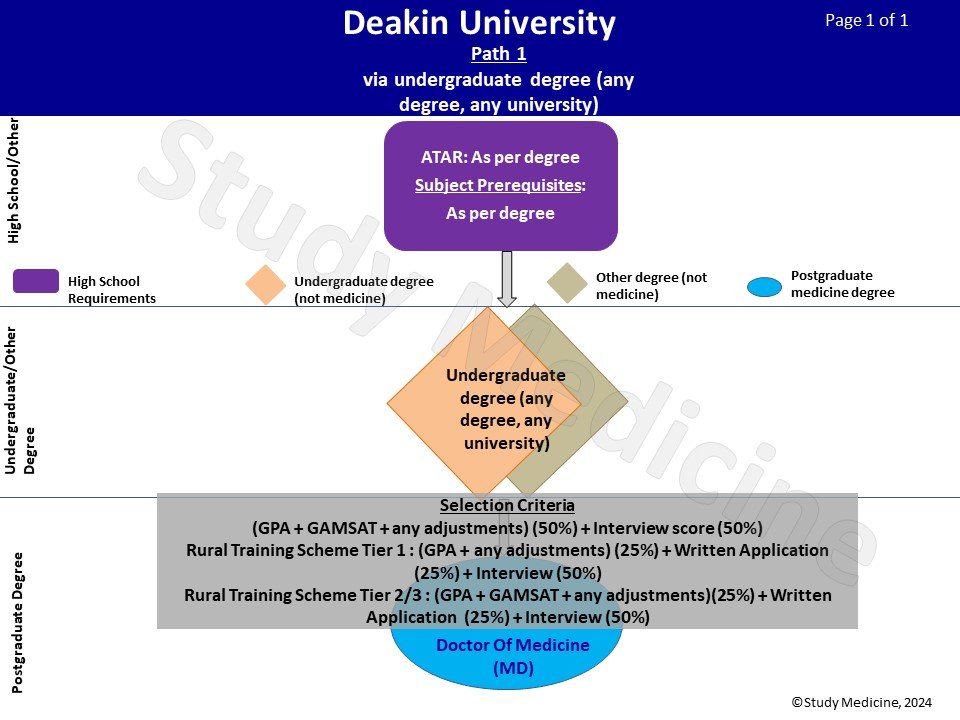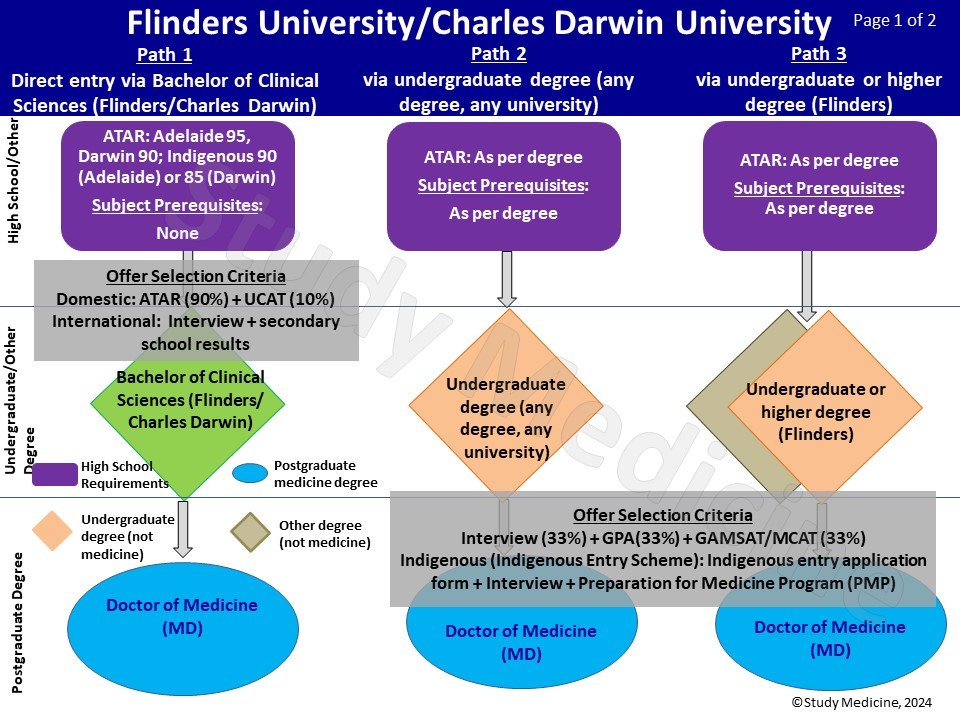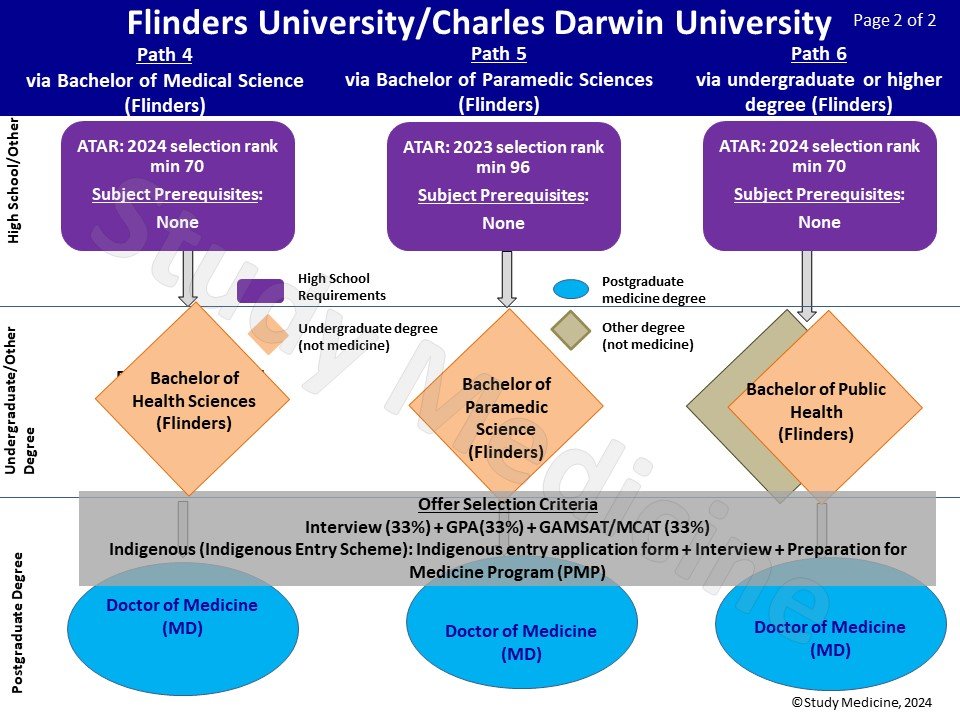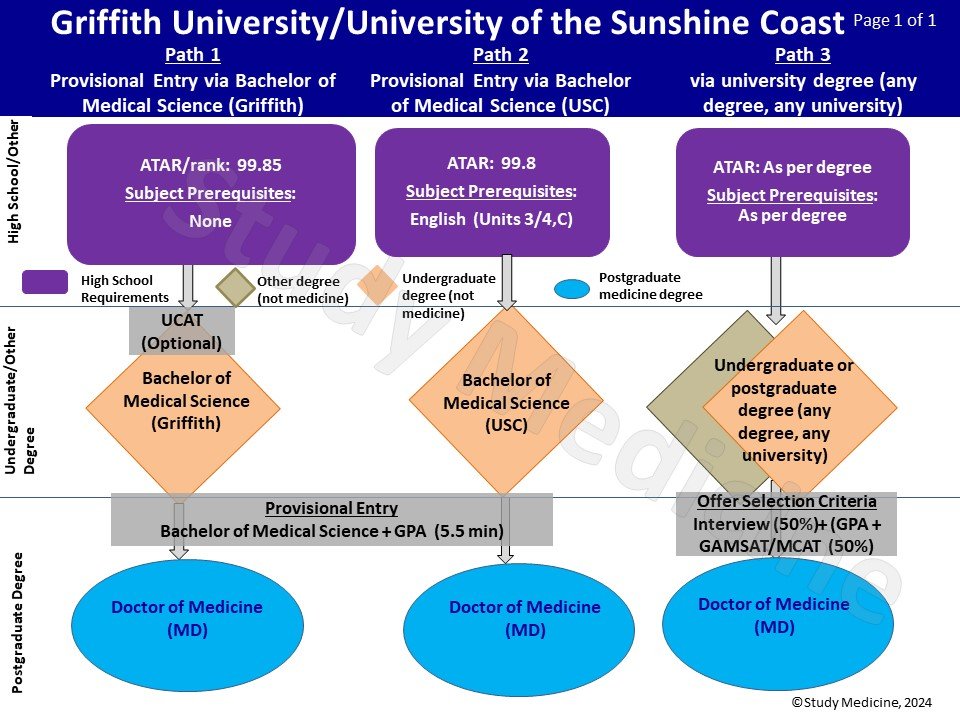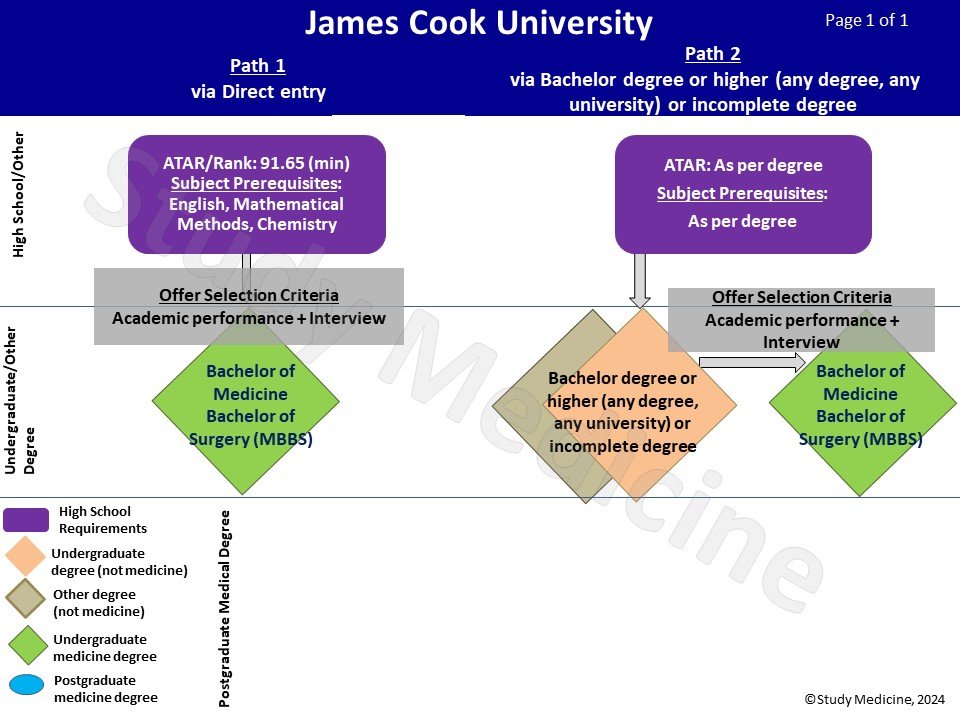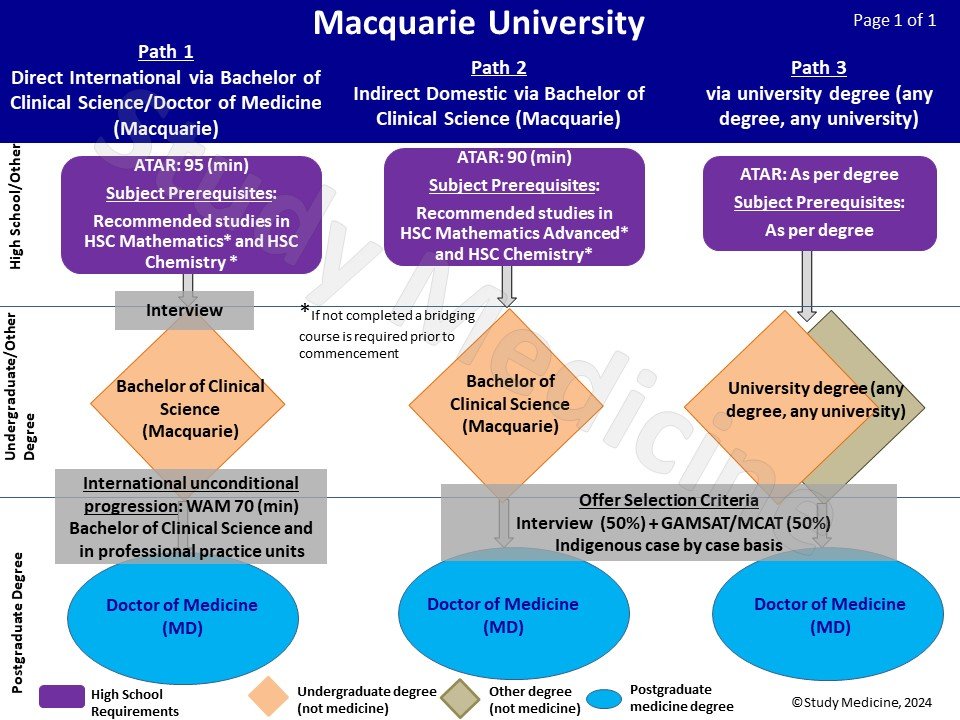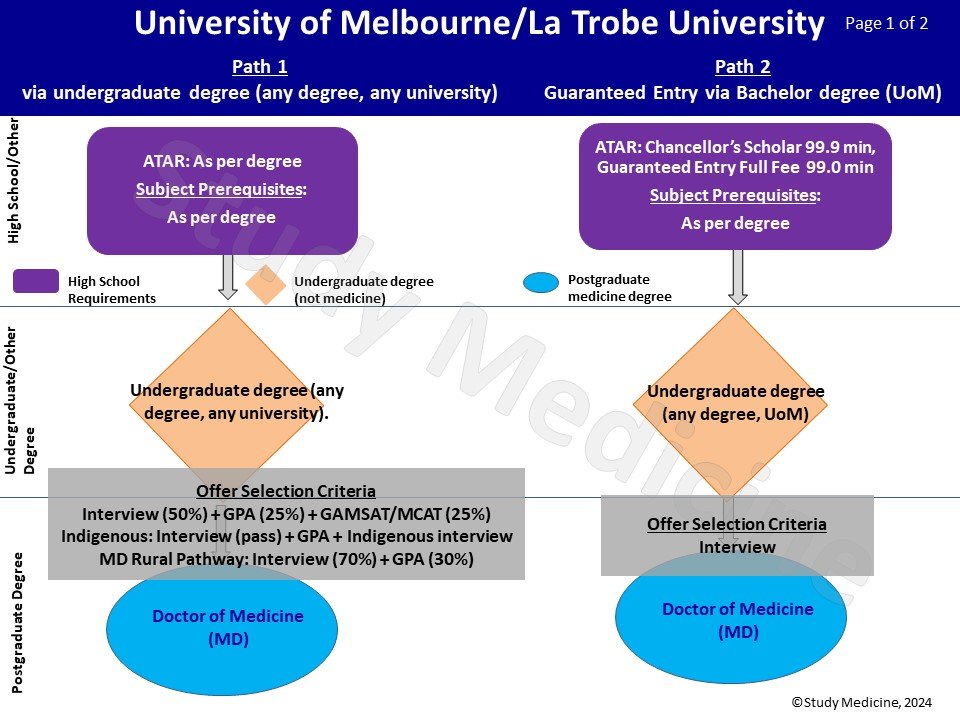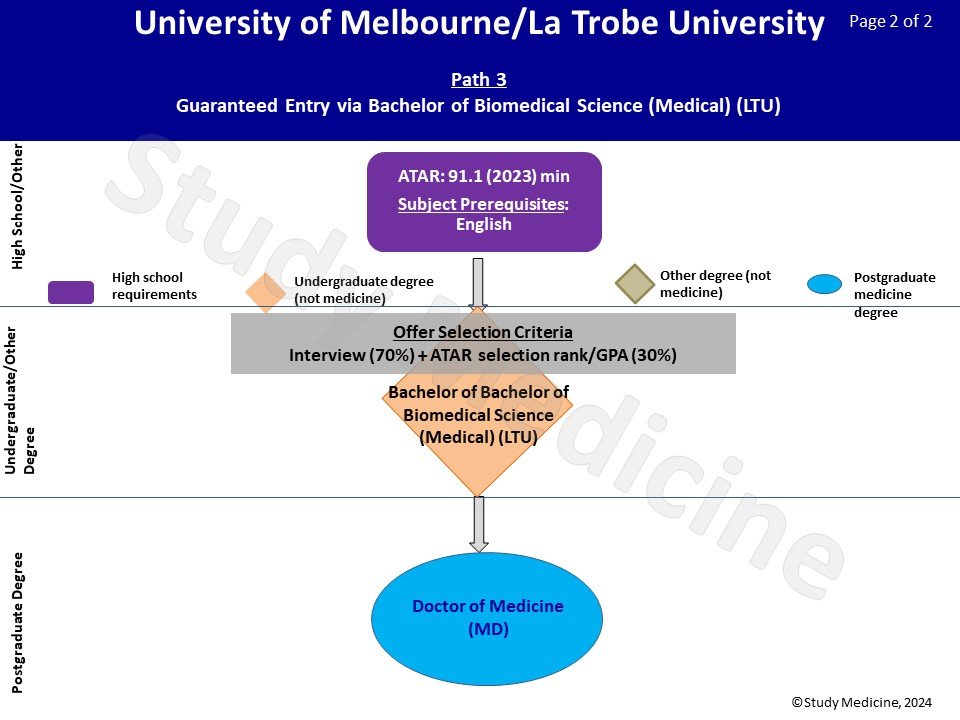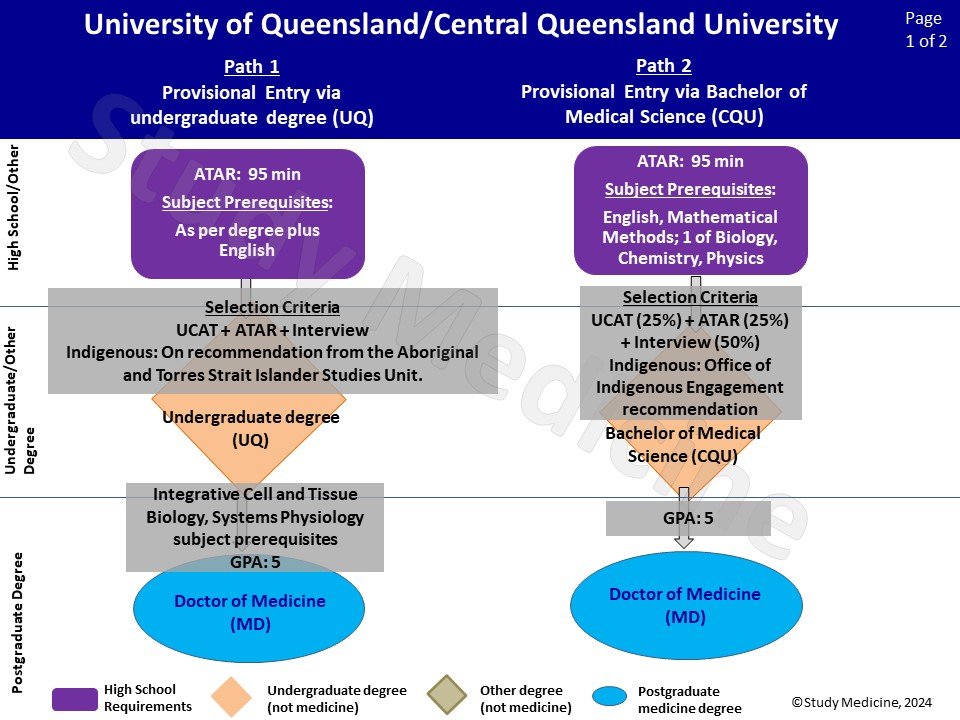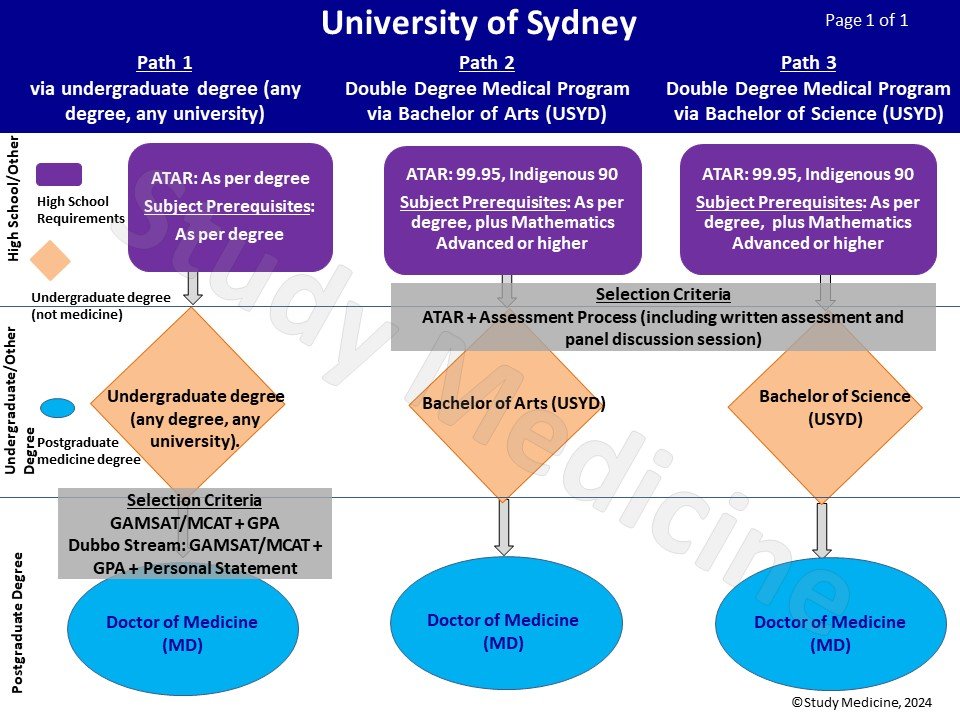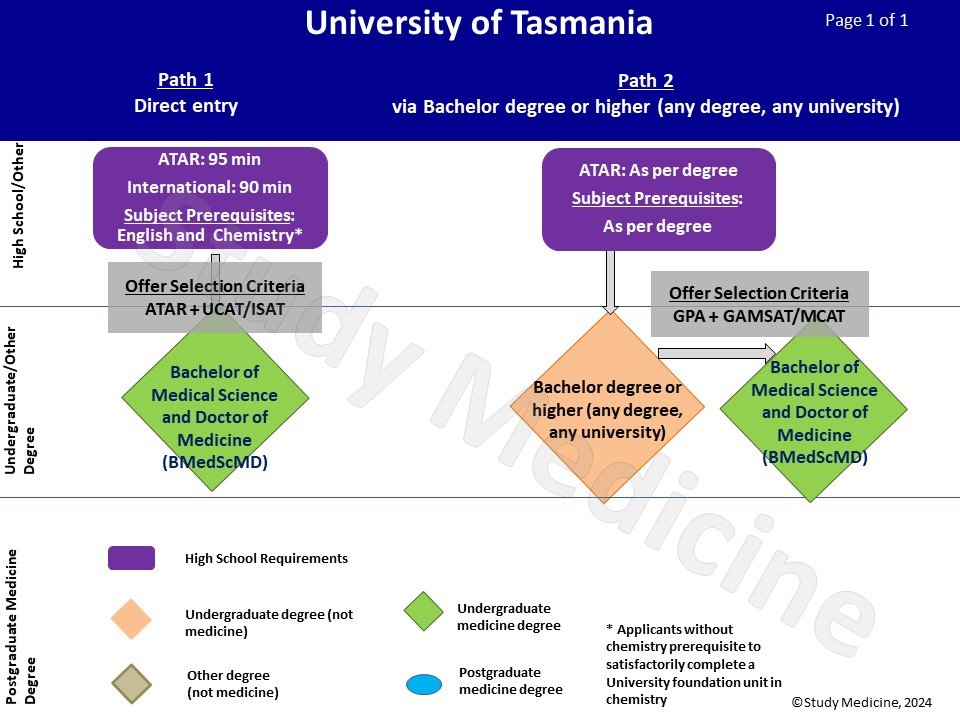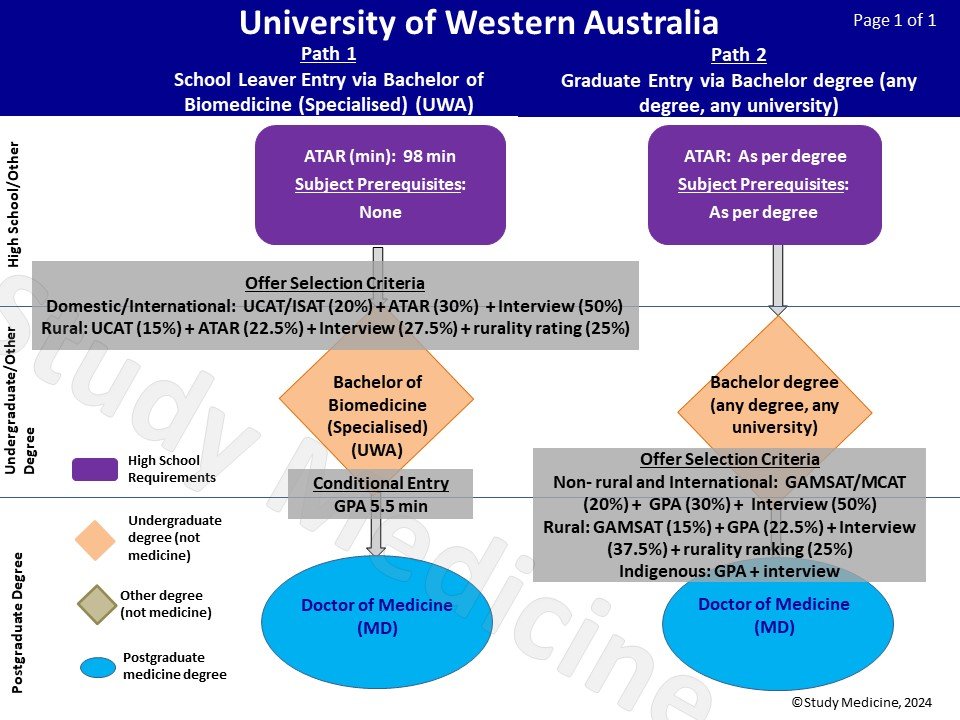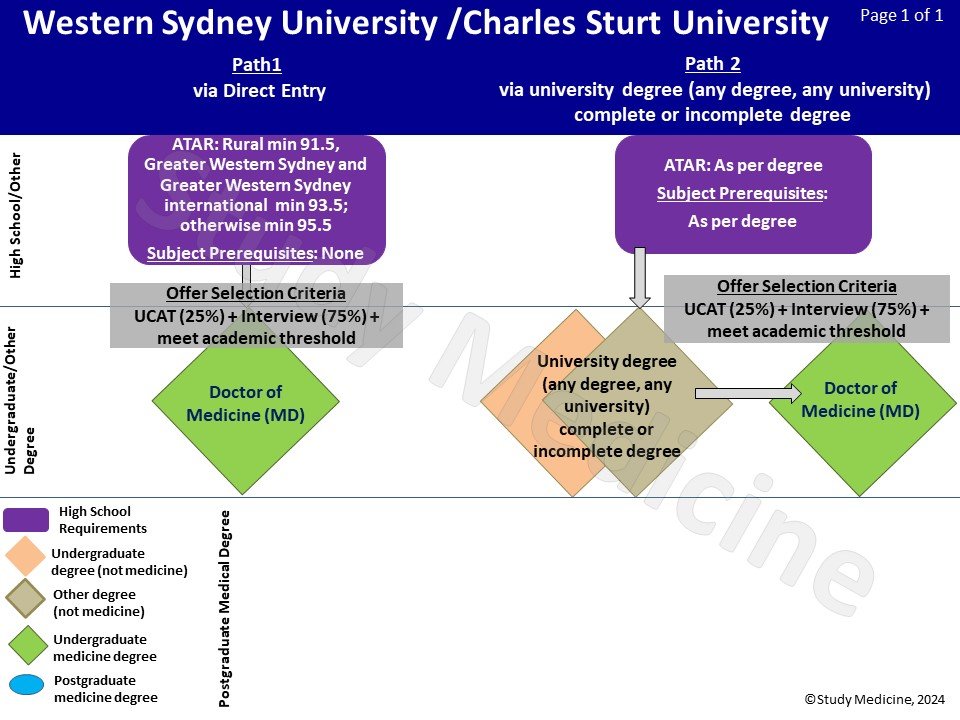Monash Medicine - detailed entry requirements and how Monash University compares with other universities
The Monash University Summary shows there are 6 paths to medicine at Monash. These are basically:-
direct entry to the medicine degree - a combined undergraduate (Bachelor of Medical Science degree) and graduate Doctor of Medicine degree, or
graduate entry to the Bachelor of Medical Science and Doctor of Medicine degree.
Entry Requirements - The full details regarding the entry requirements for medicine at Monash University are given in the table below.
This table shows, not only the requirements to obtain a place in the medicine program, but also details how the direct entry and the 5 graduate paths flow into the medicine degree, and what you need to keep in mind not only for medicine, but also if you are applying for an undergraduate degree that leads to medicine.
How Monash University Compares with Other Universities - Scroll further down, below the table and you'll also see the Monash Comparitor. This tool enables you to compare the 6 paths to medicine at Monash, with other university paths to medicine (offered by 19 Australian universities).
monash detailed entry Requirements
There are a number of notable aspects in how Monash structures its undergraduate and postgraduate medicine degree.
Monash medicine is big
The Monash medicine degree has a large student intake of 306, with most students (234) accepted through the direct entry route. The direct entry degree is highly sought after, as Monash University is the only provider of school leaver direct entry into medicine in Victoria.
There are 72 CSP places and 30 international places offered for graduates to progress into the medicine degree. Of these, 70% of places are offered to Bachelor of Biomedical Science students.
And Monash is exclusive
The graduate entry pathway is only available if you have previously undertaken a Monash degree (or Monash University recognised international degree), with only Biomedicine, Pharmacy (Honours), Physiotherapy (Honours) and Science graduates accepted. Monash have also introduced the Gippsland Partnership Program in conjunction with Federation University. This enables Gippsland - origin rural applicants to complete the Bachelor of Biomedical Science and then progress into the graduate medicine program.
The way Monash calculates the weighted average mark for graduate applicants who have multiple degrees is the most relevant degree is used. For applicants with Bachelor of Biomedical Science double degrees Monash designate the Bachelor of Biomedical Science as most relevant, emphasising the increasing preeminence of this degree as the preferred path to medicine at Monash.
International graduates are able to apply for graduate entry without a Monash degree, but in this case your undergraduate degree must have been undertaken at a recognised university and have included significant biomedical science content.
Admission tests - it depends on who you are
If you're a high school student applying for the Bachelor of Medical Science and Doctor of Medicine, you're required to sit the standard undergraduate admissions test - the UCAT (or ISAT if you're an International student). Your UCAT results contribute one third of the assessment to whether you're offered a place as a direct entry student in Monash medicine.
If, however, you're a graduate seeking a place in the Monash medical program, you're not required to sit the standard graduate admissions test - the GAMSAT (or MCAT in the case of International applicants).
Where you'll start
The main difference in commencing Monash's medicine degree between the school leaver/direct entry path and the graduate entry path is where you'll be studying during the first years of your degree. Graduate entrants undertake their first year at Monash's Churchill campus, which is in Gippsland, Victoria. Direct entry students commence at Clayton in Melbourne, Victoria.
How Old?
Monash, unlike many graduate medical degrees does not have a 10 year rule for when previous degrees need to have been completed.
Rural opportunities at Monash
Monash also have an Extended Rural Cohort Scheme for direct entry students. There are a total of 30 places offered to students through this scheme with these places available to domestic students, but importantly you don’t have to have a rural background to apply as the scheme is open to all domestic students. If you are successful in securing a place in the scheme you will spend your 3rd and 4th years of medical school and at least 12 weeks of you final year in northern Victoria.
Monash also offer the Rural End to End regional program with 30 places available in the graduate medicine program.
Monash, like all other medicine programs also has a bonded medical scheme with 28% of Commonwealth Supported Places (CSPs) allocated to students who’ll be required to practice in a rural or regional location as part of their place obligations.
If you’re applying on the basis of your rural or regional living background you are able to do so for both direct entry and graduate entry to Monash medicine.
Monash Comparitor
Monash Comparitor - Click the arrow to scroll through other university paths to medicine to compare Monash's paths. (Note: Some universities have numerous paths and these are shown on separate pages) .
Monash's Paths to Medicine
Compared with -
Other University Paths to Medicine
An important qualification
Study Medicine information has been compiled from Australian university information sources and therefore is a guide. Authoritative information is provided by the university only. Make sure you obtain information directly from the university before making any decisions.
The above information is intended to help you understand the Monash University medical degree and the available paths to gain entry. Remember, information can always change, so ensure you keep up to date by regularly checking directly with Monash University.
